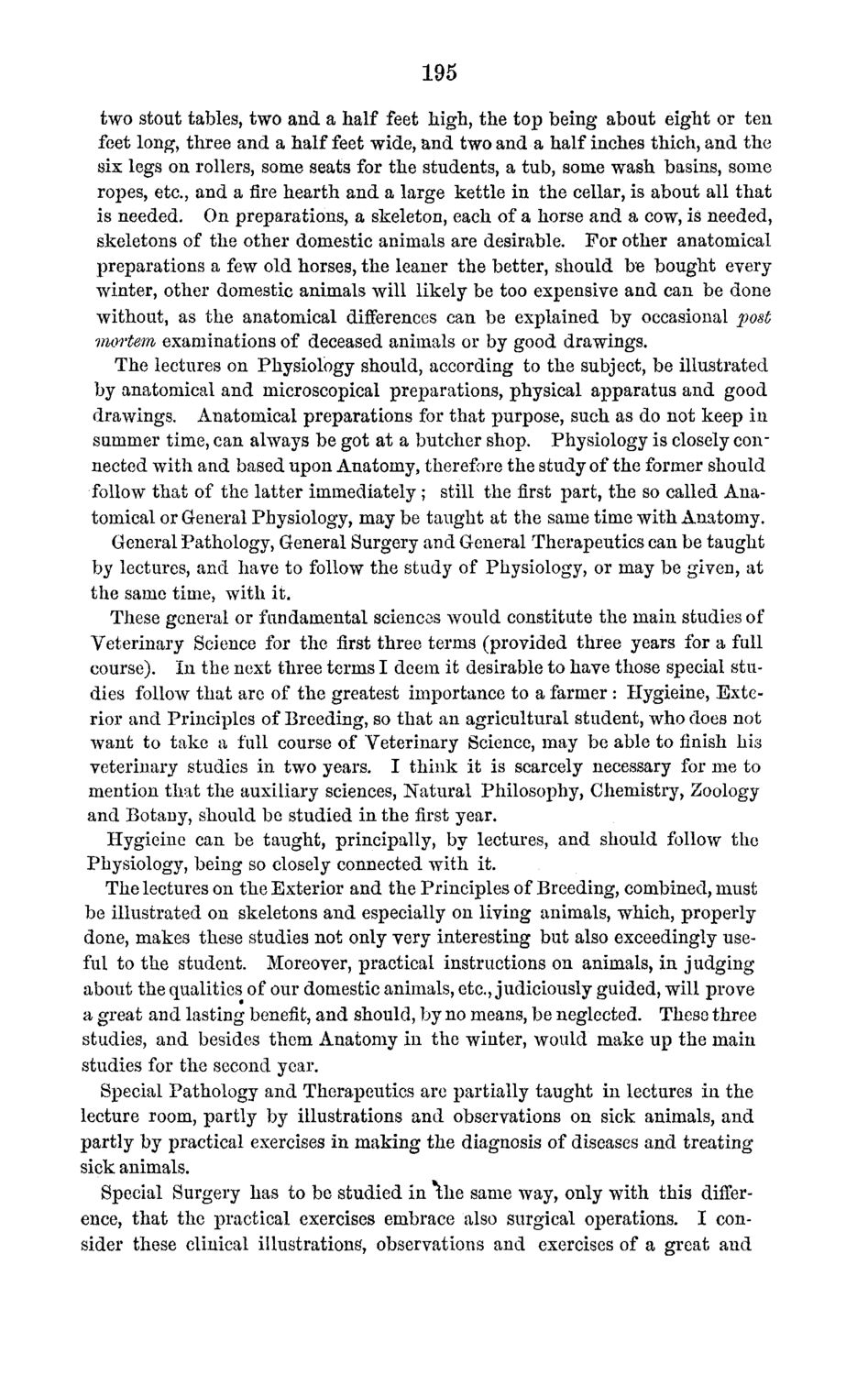| |
| |
Caption: Board of Trustees Minutes - 1870
This is a reduced-resolution page image for fast online browsing.

EXTRACTED TEXT FROM PAGE:
195 two stout tables, two and a half feet high, the top being about eight or ten feet long, three and a half feet wide, and two and a half inches thich, and the six legs on rollers, some seats for the students, a tub, some wash basins, some ropes, etc., and a fire hearth and a large kettle in the cellar, is about all that is needed. On preparations, a skeleton, each of a horse and a cow, is needed, skeletons of the other domestic animals are desirable. For other anatomical preparations a few old horses, the leaner the better, should be bought every winter, other domestic animals will likely be too expensive and can be done without, as the anatomical differences can be explained by occasional post mortem examinations of deceased animals or by good drawings. The lectures on Physiology should, according to the subject, be illustrated by anatomical and microscopical preparations, physical apparatus and good drawings. Anatomical preparations for that purpose, such as do not keep in summer time, can always be got at a butcher shop. Physiology is closely connected with and based upon Anatomy, therefore the study of the former should follow that of the latter immediately; still the first part, the so called Anatomical or General Physiology, may be taught at the same time with Anatomy. General Pathology, General Surgery and General Therapeutics can be taught by lectures, and have to follow the study of Physiology, or may be given, at the same time, with it. These general or fundamental sciences would constitute the main studies of Veterinary Science for the first three terms (provided three years for a full course). In the next three terms I deem it desirable to have those special studies follow that are of the greatest importance to a farmer : Hygieine, Exterior and Principles of Breeding, so that an agricultural student, who does not want to take a full course of Veterinary Science, may be able to finish his veterinary studies in two years. I think it is scarcely necessary for me to mention that the auxiliary sciences, Natural Philosophy, Chemistry, Zoology and Botany, should be studied in the first year. Hygieine can be taught, principally, by lectures, and should follow the Physiology, being so closely connected with it. The lectures on the Exterior and the Principles of Breeding, combined, must be illustrated on skeletons and especially on living animals, which, properly done, makes these studies not only very interesting but also exceedingly useful to the student. Moreover, practical instructions on animals, in judging about the qualities of our domestic animals, etc., judiciously guided, will prove a great and lasting benefit, and should, by no means, be neglected. These three studies, and besides them Anatomy in the winter, would make up the main studies for the second year. Special Pathology and Therapeutics are partially taught in lectures in the lecture room, partly by illustrations and observations on sick animals, and partly by practical exercises in making the diagnosis of diseases and treating sick animals. Special Surgery has to be studied in \he same way, only with this difference, that the practical exercises embrace also surgical operations. I consider these clinical illustrations, observations and exercises of a great and
| |